Exploring the Kunstgewerbemuseum with Berlin designers Birgit Severin and Guillaume Neu-Rinaudo, a.k.a. Studio B Severin
Material Conversations
For those with their fingers on the design pulse, the name Studio B Severin will sound familiar. The ascent of Birgit Severin and Guillaume Neu-Rinaudo—partners in both work and life—has been striking since launching the studio in 2013, and yet they’ve just had their busiest month ever. In September, they exhibited at both Maison & Objet in Paris and the Lake Como Design Fair. Then came their installation at the 4th Istanbul Design Biennial. And now, they've just opened an exhibition at the Kunstgewerbemuseum in Berlin under the umbrella of the IX edition of the ongoing Design Views program.
Birgit and Guillaume have been based in Berlin since they graduated from the Design Academy Eindhoven in 2013. The pair aims to explore transformation and identification through their work while drawing on art and design history. We met up with them at the Kunstgewerbemuseum so they could give us a tour of their pieces currently on view among the otherwise-classical permanent collection. Read on to hear what the duo had to say about the joys and responsibilities of design experimentation.
Boglárka Kőrösi: Let’s start with the title of your project here in the museum—Design Impressionism. Could you tell me a bit about how this project was born?
Guillaume Neu-Rinaudo: We wanted to investigate whether technological innovations and modes of production can, in fact, influence an entire art movement. Our starting point was Claude Monet’s Soleil Levant (Sunrise) from 1872. Legend has it that Monet was looking through the window of his hotel room while painting it. However, unlike today, window glass wasn’t smooth and clear at the time. The industrialization of glass had just started. Table-cathedral-glass was one of the common methods used, which means fused liquid glass was poured on an iron plate—the temperature difference made the surface rough and patterned. Looking through this glass was almost like having a filter for an Impressionist artwork! For our projects, we worked with professionals using the same technique, which the viewers can also learn more from the video that accompanies the exhibition.
BK: You’ve also linked this particular project to Japonism, another relevant influence on the 19th-century Impressionist art movement.
GN: Yes, exactly, we featured a print from the same era. Japanese art had an influence on French Impressionists after the Exposition Universelle in 1867 in Paris.
Birgit Severin: We got this image from the Rijksmuseum in Amsterdam, more specifically, from the Rijksstudio, where high-resolution reproductions are readily available.
GN: Having our project presented in this specific room is great—right next to the museum’s temporary exhibition Vis a Vis, which displays the evolution and the mutual influence of Asian and European art.
BK: Let’s talk about the Vanitas collection of rubber vases, which are also on display here. As indicated by the name, you’re drawing a strong connection to still-life paintings from the 18th century. Why did you choose rubber as a material, and why did you decide to add a video installation to this rather traditional art concept?
BS: We often glean inspiration from visiting museums. Seeing the cultural context of art and design helps us refine our ideas and create new designs. Vanitas paintings strongly inspired us in the making of the video installation, which was the inspiration for this project. We documented the course of a flower’s life and made a time lapse video of it. Our intention was to keep the motion so slow that it’s almost like a painting—the viewer needs to pay attention to notice it’s actually changing. We also wished to express that each stage has its beauty. The changing shades then became the color codes for the vases.
BK: Can you tell us a little more about the technique that was used to make the vases?
BS: While the vases are hand-made, making the mold partly involved 3D printing. Some of the vases emerge in perfect shape, while others are deformed, mimicking decay. Through the combination of 3D printing and rotation casting, we found a way to express the materiality of rubber. This resulted in the possibility of having both a matte surface and shiny, jewel-like-dotted effects within one object. I would say that we generally experiment a lot—it’s always a conversation with the material.
GR: Even though it’s amazing to see the pieces in this glass display case, it’s very different from the experience of being able to touch the pieces—tactility is very important here. Especially because most people don't expect it to be rubber—ceramics would be a more likely guess.
BK: Your collections are very poetic. Do you consider them art or design?
GN: It’s always a complicated question. I would still consider myself a designer because that’s what I was trained to be. We try to keep out items as functional as they can be. We sell the table piece from the collection Design Impressionism as a coffee table, for instance. It’s usable, just like the Vanitas Vases, which are watertight and hold flowers.
BS: Even though our pieces carry stories and have the potential to be exhibited in a museum, whenever I think about them, I picture them in a home environment. I see them in context, which probably doesn’t really happen with art. An artist wouldn’t normally say, “This sculpture would look great next to this armchair here.”
BK: Ars Memorandi, your last exhibited piece also balances between functionality and pure aesthetics. How do you view this relationship?
BS: I can imagine it on top of a table, serving French pastries. Otherwise, with this project, we tried to start a conversation about the role of plastic in our culture. We wanted to ask, why would young designers continue using this material? I personally think that when used in the right way, it has a lot of possibilities. In fact, it bears properties that other materials don’t.
BK: Can you expand on this? What is your approach to plastic as a designer rather than a consumer?
BS: Dealing with plastic requires responsibility. As a designer, a possible approach would be to state that plastic is a valuable material, and should be treated as such. Instead of increasing the number of throw-away, cheap, mass-produced objects, our aim was to create an elegant piece that could be passed from generation to generation. Our legacy to the Anthropocene will be plastic after all.
Absolutely worth discovering in person, studio b severin’s exhibition Design Impressionism at the Kunstgewerbemuseum in Berlin runs through October 17th. Exhibiting their pieces in dialogue with important art historical works, studio b severin joins a remarkable list of designers who have taken part in the Design Views program, like Elisa Strozyk, Chmara.Rosinke, and Philipp Weber, to name a few. Within this series, co-organized by the Internationales Design Zentrum Berlin, young designers are given the opportunity to explore and respond to the Kunstgewerbemuseum’s permanent collection.
-
Photos by
-
Pedro Gething
Multitalented, full of good ideas, and curious about almost everything—especially his adopted home Berlin—Pedro is a Portuguese-British photographer with a degree in design. We like to have him in the office working on our photos as much as possible, but when we reluctantly let him go, he can be found traveling and just generally exploring the world.
-
-
Text by
-
Boglárka Kőrösi
Boglárka Kőrösi is a design theorist from Budapest, who has years of experience managing, curating, and writing about the Hungarian art and design scene. Whenever she becomes overwhelmed by the diversity of this field, she likes to sit back and enjoy a good book or discover Berlin on her bike.
-
More to Love
Vanitas Late Vase by Studio B Severin
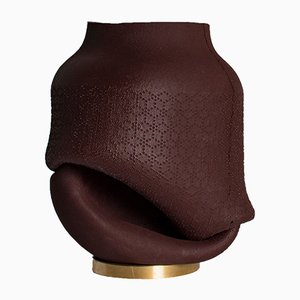
Ashes Mid Vase by Studio B Severin
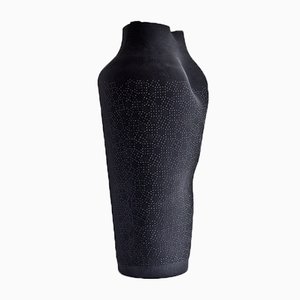
Ashes Early Vase by Studio B Severin

Ashes Late Vase by Studio B Severin
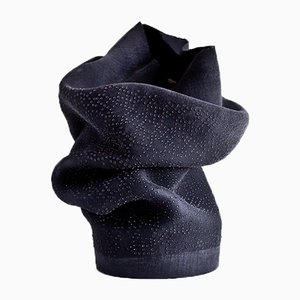
Heimat Pendant Lamp by Studio B Severin
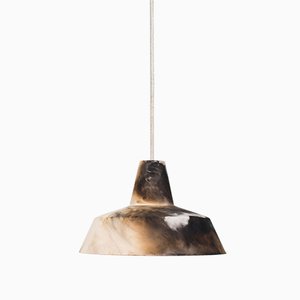
Alteration Pendant Lamp by Studio B Severin
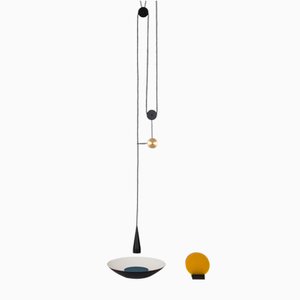
Vanitas Vases by Studio B Severin, Set of 3

Ashes Vases by Studio B Severin, Set of 3



